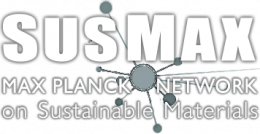A tandem project of Prof. Dr. Dierk Raabe (MPI for Sustainable Materials) and Prof. Dr. Beatriz Roldán Cuenya (Fritz Haber Institute of the Max Planck Society).
About/Topic
Plastics and metal wastes are two significant sustainability challenges of our time. This project pioneers a circular and fossil-free solution: converting mixed polymer waste into a hydrogen-rich reductant to recover valuable metals from industrial residues via plasma-assisted processes, thereby eliminating CO2 emissions and microplastic pollution while enabling the production of high-purity metallic products.
Persons
- PI: Prof. Dr. Dierk Raabe (Director, Microstructure Physics and Alloy Design Department, MPI for Sustainable Materials)
- PI: Prof. Dr. Beatriz Roldán Cuenya (Director, Interface Science Department and Interim Director of the Inorganic Chemistry Department, Fritz Haber Institute of the Max Planck Society)
- Dr. Tugce Beyazay (Max Planck Institute for Sustainable Materials)
- Dr. Pierre Kube (Fritz Haber Institute of the Max Planck Society)
- Dr. Philipp Grosse (Fritz Haber Institute of the Max Planck Society)
- Dr. Phil Preikschas (Fritz Haber Institute of the Max Planck Society)
Project summary
This project explores a sustainable and fossil-free approach to metal production by combining the upcycling of polymer waste with plasma-assisted extraction from industrial residues. Employing both thermal (arc plasma) and non-thermal (microwave plasma) systems, the process converts hydrogen and carbon-rich polymer waste into reactive species that facilitate metal oxide reduction while simultaneously generating hydrogen-containing gas streams. The complementary plasma systems offer distinct advantages: thermal plasma provides the high temperatures needed for rapid metallurgical reactions. In contrast, non-thermal plasma enables selective activation of gas-phase species at lower energy input. This dual-function strategy enables the valorization of mixed, contaminated waste fractions, which are typically unsuitable for conventional recycling, while minimizing reliance on carbon-based reductants. By integrating materials chemistry, plasma physics, and process engineering, the project aims to establish a circular pathway for low-emission metal recovery and more sustainable hydrogen production.
